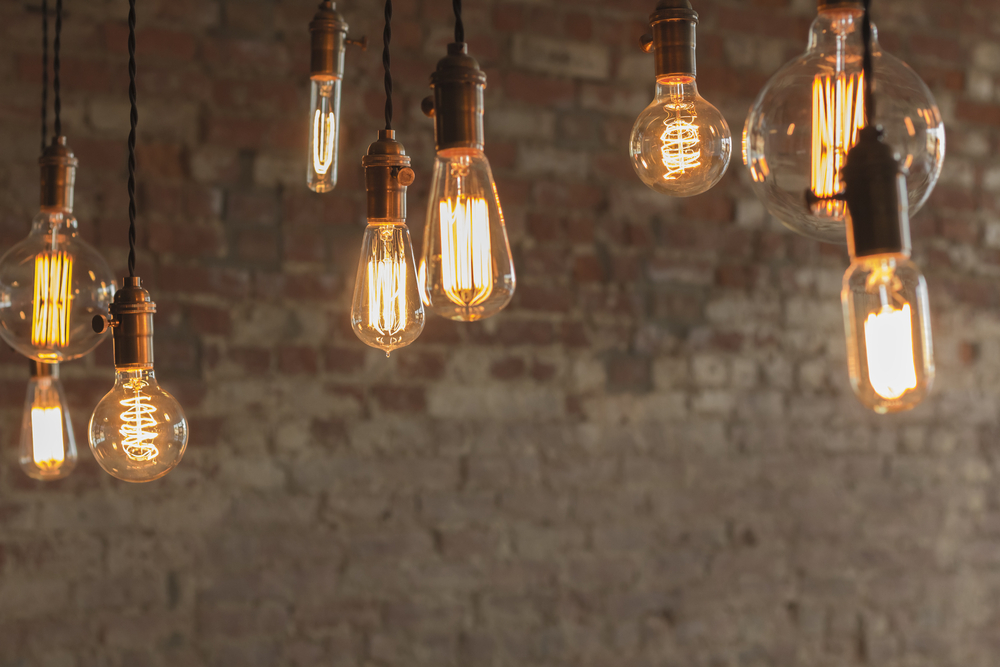
What Different Types of Lightbulbs are There? Which is Best for My Home?
Have you ever wondered what different types of lightbulbs there are? Lightbulb technology has come a long way in recent times. In the past, lightbulbs would consume a lot of power. This would mean an expensive electricity bill. Energy is one of the most expensive ongoing costs associated with living, apart from your rent or mortgage repayments.
Now that this technology has advanced, millions of Australians are saving dollars off the total cost of their power bill. In this article, we’re going to explore all the different types of lightbulbs. By the end of this blog, you’ll know which lightbulbs are right for your home, which to avoid, and why!
Incandescent and Halogen Globes
Incandescent lights date back to the very beginnings of electrical powered light. These bulbs work by having a wire filament inside the globe, powered by an electric current. This wire is heated by the current, and the glow from this heat provides the illumination. These globes also generate a lot of heat. These globes are also filled with a gas, which stops the heat from dissipating too rapidly.
Halogen incandescent bulbs use elements like bromine or iodine for the gas, combined with a tungsten filament. The issue with these light globes is that the majority of the energy is transformed into heat, rather than light. This energy is wasted, and can also heat the home beyond what you feel comfortable with.
These globes are cheap and easy to produce, but waste energy and also have a short lifespan. Due to this, they aren’t the best choice for lighting your home.
Compact Fluorescent Lights
These types of lights are known for short as CFLs. They used to have a bad reputation for providing harsh light and frequently flickering, yet the manufacturing processes for CFLs have improved greatly over time, and they can now provide over ten thousand hours of light, with 80% less energy consumption than an incandescent globe.
These bulbs work through a mix of argon gas, phosphor and tiny mercury particles. When you flick the switch, the electricity makes the gas combine with the mercury to create ultraviolet light. Now, this light is invisible to the eye, but that’s where the phosphor comes into the mix. This chemical “fluoresces” when UV hits it, emitting the light and giving it its name. Nowadays, these lights don’t flicker as much as they used to.
In terms of use for your home, they are a better and more budget-friendly choice than incandescent globes. However, due to the mercury, they are bad for the environment and tricky to dispose of. They can also take a while to get warm enough to emit their full lumen output, and can’t be used with dimmer switches. They are probably a good choice for a garage or shed, but you wouldn’t want them in your living areas or bedrooms.
Light Emitting Diodes
In more recent times there has been a light-emitting diode (LED) revolution. These modern lights work by connecting a negative and positive current through a semiconductor to generate energy, which is outputted in the form of light. LEDs are quite small, making them useful for modest spaces, and they have a rating of around 90 lumens per watt-hour. Their colour can be changed quite easily, hence the market for smart globes which have emerged in the last few years too.
The real benefit for an LED is their longevity, with each bulb lasting up to fifty thousand hours. As we saw above, a CFL lasts for ten thousand hours or so. This makes LEDs up to five times longer lasting than your other options. They can also tolerate being switched on and off, which can affect other globes and reduce their lifespan. These light sources also have a small heat signature, making them more efficient than the competition described above.
Their downsides include being voltage-sensitive, requiring a thermal cooling sink and their bright, direct light. When they first hit the market they were an expensive option, but now they have dropped in price making them affordable for the majority of households.
Which is Right for my Home?
In this article, we’ve explained what different types of lightbulbs are there, but which is truly best for your home?
In general, LED globes are the most efficient, cost-saving type of lighting available on the market these days. Now that they are affordable for household use, there are few reasons why you would go with incandescent or CFL light sources anymore.
So, save money, reduce your carbon footprint and go with LED. You can also read more about energy-saving lightbulbs here. Alternatively, if you find yourself in need of domestic or commercial electrical services, contact All Electrics today on 03 8719 8776 to speak with one of our experienced electricians.

